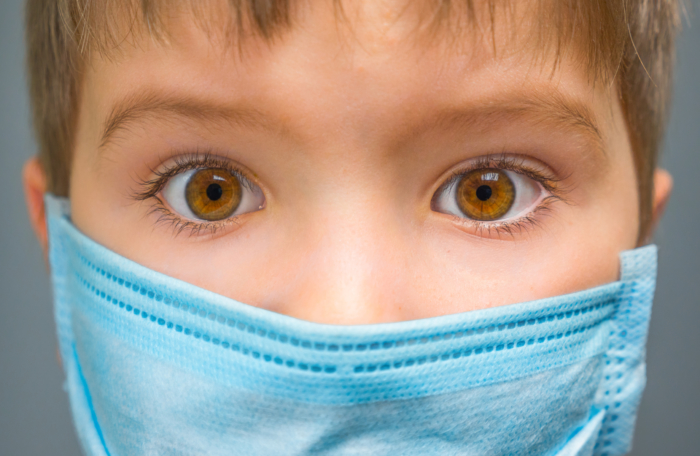N.H. day care reopening rules would send thousands of children home
If the state regulations for reopening child care centers take effect as issued, 165 children at the state’s largest child care center would lose their spots and have to stay home. And they aren’t alone.
“St. Peter’s would lose 165 spots. That’s over half our enrollment,” Lisa Cormier, director of St. Peter’s Home on Manchester’s West Side, told the Josiah Bartlett Center. “People look at it from the financial standpoint, but it’s 165 children that now have no place to go.”
“The point was to make people more comfortable with child care so they would go back to work. But instead it’s cut us off at the knees. At St. Peter’s, it’s 165 kids, but it’s literally thousands across the state.”
The new child care guidance, issued Monday, imposes social distancing mandates that exceed the child care guidance issued by the U.S. Centers for Disease Control and Prevention as well as the regulations imposed by other New England states. They would be the most severe child care restrictions in the region.
The CDC guidance consists largely of recommendations, not mandates. For example, the CDC recommends that sleeping mats be “spaced out as much as possible, ideally 6 feet apart.” It doesn’t mandate, or even recommend, maintaining six feet between children otherwise.
Instead, the CDC recommends keeping kids in the same groups throughout the day and not mixing groups in common areas.
New Hampshire’s far more rigid guidance mandates that no more than 10 people, including teachers, be in any one room at any time, and that children be spaced at least six feet apart at all times whenever possible.
For day care operators that have been open throughout the emergency, like St. Peter’s Home, that means cutting class sizes by more than half. If a room has two teachers, it can have a maximum of eight students, down from around 20 before.
The rules also require that children be seated at least six feet apart during meals and that they eat in the classrooms, not in a communal cafeteria.
“Our tables are four and a half feet,” Cormier said. “So, I’m not sure if they want them eating on the floor, if they think that’s more sanitary?”
The mandates forbid floating staff from one room to another, which means no staff member can cover for another for any reason throughout the day.
“it’s not going to let teachers take a break. It’s not going to let teachers go to the bathroom,” Cormier said.
A review of child care reopening rules in other New England states shows New Hampshire’s new rules to be the most restrictive and least flexible of those issued so far.
Rhode Island and Connecticut mandate a 10-child maximum per room, but don’t contain as many additional mandates.
Vermont limits class sizes to 25 and recommends, but doesn’t mandate, six-foot distancing between individuals. Maine has issued a single-page guidance recommending basic sanitation and hygiene practices and relaxing some staff-to-child ratios.
Massachusetts closed day cares during the initial shutdown, leaving only some designated emergency day cares open. Its rules for day care reopening have not yet been issued.
Day care operators were aware of the guidance in other states and were surprised that New Hampshire’s rules were so limiting. The state has been flooded with phone calls from day care operators this week, to the point that the state has suspended implementation of the rules (which were to take effect on Monday) and Gov. Chris Sununu on Wednesday said the state would consider revising them.
“We’re e hoping that they’re going to go more toward Vermont, who is allowing 25 in a room,” Cormier said.
“Those of us who’ve been open all along have struggled through for 10 weeks with no regulations, and all of a sudden what’s come out has been very difficult.”
Despite being open throughout the entire state of emergency, St. Peter’s has not had a single COVID-19 infection, Cormier said. The state Department of Health and Human Services did not return a request for information on how many COVID-19 cases have been associated with child care centers in New Hampshire.
Child care centers generally have not been associated with large outbreaks of the disease.
“We have not seen large numbers of cases in daycare centers of COVID, Deidre Gifford, acting commissioner of the Connecticut Department of Public Health, was quoted in the Connecticut Mirror as saying earlier this week. “They do report to DPH and it’s been a very, very small number of cases that we have seen.”
New Hampshire’s day care guidance is a classic example of well-intentioned regulations creating needless hardship because regulators sought to impose mandates rather than offer help and guidance.
“At first there was a little bit of shock,” Cormier said. “I don’t think the intention was to cut day cares in half. I think it was just one of those things that looked better on paper than in reality.”
Consistent with our guidelines for reopening the economy, the Josiah Bartlett Center for Public Policy recommends rescinding the unworkable mandates and instead offering guidance on best practices.
The point is to have child care operators improve their safety procedures so parents can get back to work. Imposing unrealistic and unnecessary mandates that send thousands of children home won’t achieve that.




Trackbacks & Pingbacks
[…] half our enrollment,” Lisa Cormier, director of St. Peter’s Home on Manchester’s West Side, told the Josiah Bartlett Center. “People look at it from the financial standpoint, but it’s 165 children that now have no place […]
Comments are closed.